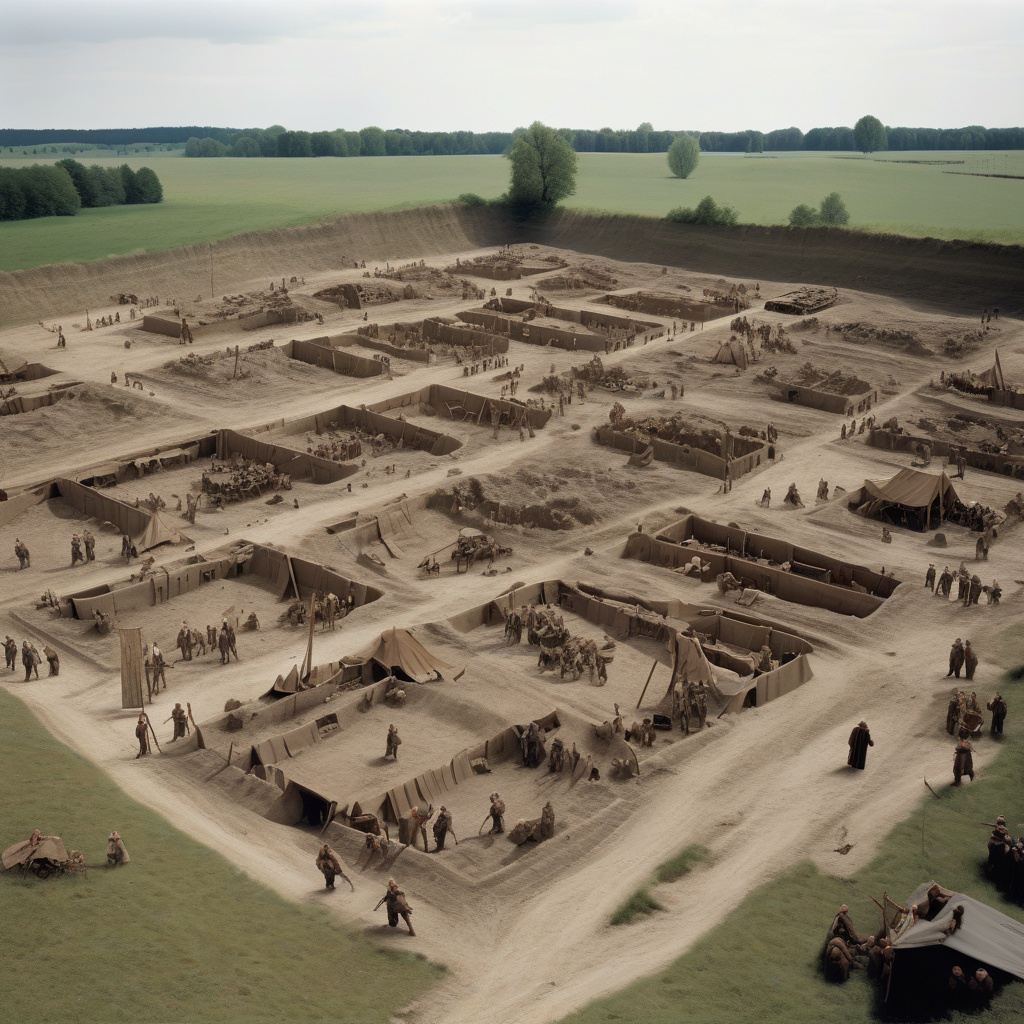Mysterious Thirty Years’ War camp, once home to 80,000 people, unearthed in Germany
Following two years of extensive excavations, scientists have expressed both astonishment and intrigue regarding their recent discovery of a vast campsite from the Thirty Years’ War in Wittstock, Germany. The camp, believed to have accommodated around 80,000 individuals during the tumultuous period of the 17th century, has unveiled a trove of historical insights that shed light on the harsh realities of war and survival during that era.
The Thirty Years’ War, which ravaged Central Europe from 1618 to 1648, was one of the most devastating conflicts in history, decimating populations and reshaping landscapes. The unearthing of this massive campsite provides a tangible link to the past, offering a glimpse into the daily lives of soldiers and civilians caught in the throes of war.
Archaeologists working on the site have discovered a complex network of trenches, makeshift shelters, and fire pits, indicating the strategic planning and resourcefulness of the camp’s inhabitants. The sheer size of the camp suggests that it served as a temporary home for a significant military force, possibly belonging to the Protestant or Catholic factions involved in the conflict.
One of the most intriguing finds at the site is a series of personal items and artifacts that offer a poignant window into the lives of those who once dwelled there. From well-preserved uniforms and weapons to everyday objects like combs and eating utensils, each discovery adds a layer of humanity to the stark historical narrative of war.
The excavation has also uncovered evidence of the camp’s layout and organization, providing valuable insights into early modern military strategies and logistics. The presence of designated areas for cooking, sleeping, and waste disposal indicates a level of planning and discipline that was essential for the functioning of such a massive encampment.
Moreover, the discovery of medical tools and supplies hints at the presence of field hospitals within the camp, where injured soldiers and civilians received rudimentary care in the midst of chaos and conflict. The harsh conditions of war, combined with the lack of advanced medical knowledge, would have made these makeshift facilities a crucial lifeline for the wounded and sick.
As researchers continue to analyze the findings from the Wittstock campsite, the story of this forgotten chapter of history begins to unfold. Each artifact and structure unearthed adds another piece to the puzzle, allowing us to piece together a more comprehensive understanding of the human experience during the Thirty Years’ War.
The significance of this discovery extends beyond the field of archaeology, serving as a reminder of the enduring impact of war on societies and individuals. By preserving and studying the remnants of the past, we gain valuable insights that can inform our present and shape our future.
In a world still grappling with the consequences of conflict and division, the unearthing of the Thirty Years’ War camp in Wittstock stands as a testament to the resilience and ingenuity of the human spirit in the face of adversity. It is a poignant reminder of the sacrifices made by those who came before us and a call to honor their memory by striving for peace and understanding in our time.
#ThirtyYearsWar #WittstockCampsite #ArchaeologicalDiscovery #HistoricalInsights #WarAndSurvival












